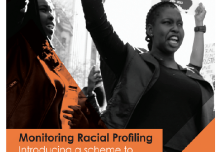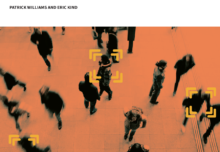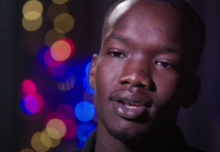Operation Fortitude: it’s not just clumsy wording that should worry us
Leanne Weber, Monash University
The news that the newly formed Australian Border Force (ABF) was partnering Victoria Police and other agencies to mount a special operation in Melbourne’s CBD sparked an immediate storm of protest on Friday. Protesters equated the prospect of officers checking the immigration status of “any individual we cross paths with” to the tactics of a police state.
The public outcry forced the cancellation of the operation and sent Immigration Minister Peter Dutton and Prime Minister Tony Abbott ducking for cover.
What seems to have prompted less debate is the “clarification” issued the same day. This press release openly acknowledged that not dissimilar multi-agency operations were mounted routinely in Victoria and elsewhere.
How do immigration compliance operations work?
Many Australians would be surprised to know that both police and immigration officers possess wide powers under Section 188 of the Migration Act. Officers can “require a person whom the officer knows or reasonably suspects is a non-citizen” to present either a personal identifier or evidence of being lawfully present. If, as a result, the officer suspects that the person is an unlawful non-citizen, Section 189 requires them to take that person into custody.
Several years ago I conducted research into the methods by which unlawful non-citizens were detected in NSW. Immigration compliance officers told me they would act on specific notifications about suspected non-citizens. These persons were identified through the (subtly named) Dob-In Line, or via inter-agency data-matching exercises.
The officers would also raid particular workplaces that were identified as “high risk” through more generalised forms of intelligence analysis. In addition, they would occasionally participate in joint operations in which police or other regulatory agencies would take the lead with compliance checks relating to taxi licences, drivers’ licences or other professional accreditation.
Any individuals identified in these processes who were thought to be non-citizens were referred to immigration officers. In this way, immigration enforcement has “piggy-backed” on the powers of other agencies to initiate such encounters.
Police can also instigate checks themselves via the Immigration Status Service (ISS). The ISS database was established following the scandals surrounding the deportation of Vivian Solon and the detention of Cornelia Rau and other overseas-born Australian citizens.
These events revealed that immigration authorities were acting on “referrals” from police with remarkably little scrutiny. Rather than scaling back their enforcement efforts (although deportations and removals did dip for several years following the inquiries into these enforcement “mistakes”), the main response was to invest in improved information technology, including the ISS. This meant an individual’s legal status could be more reliably determined before initiating enforcement action.
Who can be checked and when?
Police I spoke with reported a wide range of contexts in which immigration checks might be conducted. These could occur as part of criminal investigations or during vehicle or pedestrian stops, which they claimed would always be initially for a police-related purpose.
In the case of street stops, markers such as language, possession of foreign documents, outward appearance and seeming to be “out of place” were the reasons stated for making opportunistic immigration checks.

AAP/Callaghan Walsh
The data provided to me on the first 20 months of the ISS’ operation revealed NSW Police was by far the biggest user of the system. Victoria Police came a distant second.
Just over one in ten immigration status checks made via the system confirmed the individual to be unlawfully present. So, nearly 90% of checks were made on lawfully present individuals, including citizens.
This amount of “collateral damage” from immigration checks highlights another example of curious wording from the now-notorious ABF press release. It stated that Operation Fortitude was designed to promote “a secure and cohesive society”.
Many of the police checks reported above were possibly conducted without the knowledge of the person concerned. But where individuals are explicitly referred to immigration authorities, or where non-citizens are aware their immigration status may be checked – in an increasing range of circumstances which includes attempting to access employment, education, medical care and other essential services – there is enormous potential for negative impacts on feelings of secure belonging.
Community workers interviewed in my NSW study gave examples of individuals and families who were confused about their legal status and therefore fearful of approaching authorities for assistance.
What made Operation Fortitude different?

AAP/Mal Fairclough
What made the bungled Operation Fortitude stand out from these more surreptitious border enforcement efforts was the audacity with which the ABF announced it. Normally, press releases are issued after, rather than before, joint operations or compliance raids. Often these releases have the apparent purpose of reporting how many unlawful non-citizens were detected.
Friday’s announcement was also notable for the curious claim that this operation was a “first” – seemingly a cause of excitement and celebration for the fledgling ABF, but a routine occurrence for more seasoned immigration compliance officers – and for its apparent breadth.
The operation was aimed at “people travelling to, from and around the CBD”, rather than the foreign-born restaurant workers, taxi drivers and fruit pickers whose targeting by immigration authorities is regularly presented as TV infotainment on the aptly named Border Force.
Coupled with the sweeping legal powers described above, when a government deliberately creates a uniformed branch from what was previously an administrative agency, gives it an aggressive name and appoints a former police officer to lead it, it is hardly surprising if its members consider they have the green light to present a threatening image to the public.
The issuing of a press release before the operation – although ridiculed in the media as effectively giving the game away – is consistent with the misguided deterrent-based thinking that dominates offshore border control. Strategies of general deterrence rely on “talking up” the threat of detection, not necessarily to those who might be detected in a particular operation, but to all others who fall into the targeted risk category.
How this can be presented as a recipe for social cohesion is another question that both state police and the ABF need to answer.
![]()
Leanne Weber, ARC Future Fellow in Internal Border Policing, Monash University
This article was originally published on The Conversation. Read the original article.
See also:
Border Force: could you be stopped by an official?, Jane Lee, The Age, August 28 2015
Sophie Ellis, a lawyer at Flemington-Kensington Legal Centre, said Victorians had the right to privacy and freedom of movement under the state’s Human Rights Charter. “That means that people have a right to be out on the street, to be with friends in public places,” she said…




